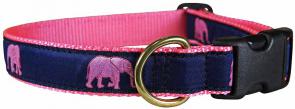
- Curbside Pickup
- Free Local Delivery
 Free Shipping on all orders over $75
Free Shipping on all orders over $75
 Free Shipping on all orders over $75
Free Shipping on all orders over $75Please Read ALL of the Bulleted Information Above Before Purchasing.
Against the wishes of Carranza, who wanted to name Manuel Chao as the provisional governor of Chihuahua, Villa was named as the provisional governor of the state of Chihuahua in 1913, after the local military commanders in the region elected him. As Governor of Chihuahua, Villa recruited more experienced generals, such as Toribio Ortega, Porfirio Talamantes and Calixto Contreras, in his military staff and achieved more success than ever.
Following his appointment as governor of Chihuahua, Villa's secretary Perez Rul divided his army into two groups, one led by Ortega Contreras and Orestes Pereira and the other led by Talamantes and Contreras' deputy Severianco Ceniceros. According to some of the references, Villa considered Tierra Blanca his most spectacular victory, though Talamantes died while fighting the battle as well. Villa's war tactics were studied by the United States Army and a contract with Hollywood was made whereby Hollywood would be allowed to film Villa's movements and 50% of Hollywood's profit would be paid to Villa to support the Revolution. As governor of Chihuahua, Villa raised more money for a drive to the south by printing his own currency. He decreed his paper money to be traded and accepted at par with gold Mexican pesos, then forced the wealthy to give loans that would allow him to pay salaries as well as provide food and clothes to the army. He also took some of the land owned by the hacendados (owners of the haciendas) to give it to the widows and family of dead revolutionaries. The forced loans would also support the war machinery of the Mexican Revolution. He also confiscated gold from specific banks, in one case, that of the Banco Minero, by holding hostage a member of the bank's owning family, the extremely wealthy Terrazas clan, until the location of the bank's hidden gold was revealed. Villa's political stature at that time was so high that banks in El Paso, Texas, accepted his paper pesos at face value.
His generalship drew enough admiration from the U.S. military that he and Álvaro Obregón were invited to Fort Bliss to meet Brigadier General John J. Pershing. Returning to Mexico, Villa gathered supplies for a drive to the south. The new pile of money was used to purchase draft animals, cavalry horses, arms, ammunition, mobile hospital facilities (railroad cars and horse ambulances staffed with Mexican and foreign volunteer doctors, known as Servicio sanitario), and food, as well as to rebuild the railroad south of Chihuahua City. As governor, he also recruited fighters from Chihuahua and Durango and became leader of a large army known as the Division del Norte (Division of the North), the most powerful and feared military unit in all of Mexico.

Debs Used Tennis Balls (2)
$1.00
|
On Sale
Made In Maine

Pink Elephant Parade - 1-inch Ribbon Dog Collar
$26.00 $15.75
|
Made In Maine

Lobster Treats for Salty Dogs - 5oz
$11.00
|
Copyright © 2010-2020 Two Salty Dogs Pet Outfitters, LLC.
Website Designed and Created by Digital Design Solutions